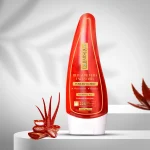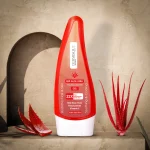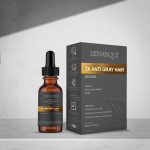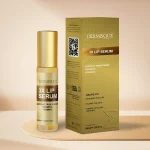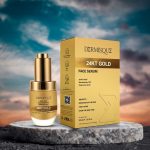
Blog
Understanding Skincare Labels: What to Look For and Avoid
- By admin on
- August 6, 2024
Navigating the skincare aisle can be overwhelming with the myriad of products boasting various benefits. To make informed decisions, it’s crucial to understand skincare labels. Here’s a detailed guide on what to look for and avoid when choosing your next skincare product.
Key Ingredients to Look For
- Hyaluronic Acid
- Benefits: This ingredient is renowned for its ability to retain moisture, keeping skin hydrated and plump.
- How it Works: Hyaluronic acid can hold up to 1,000 times its weight in water, making it a powerhouse for moisture retention. It works by drawing moisture from the environment and deeper layers of skin to the surface, providing an immediate and lasting hydrating effect. This makes it especially beneficial for dry or dehydrated skin, giving it a smooth and supple appearance.
- Vitamin C
- Benefits: Known for its brightening and antioxidant properties, Vitamin C helps protect skin from free radicals and sun damage.
- How it Works: Vitamin C promotes collagen production, which is essential for maintaining skin elasticity and firmness. It also inhibits melanin production in the skin, which helps lighten hyperpigmentation and brown spots, even out skin tone, and enhance skin radiance.
- Retinol (Vitamin A)
- Benefits: Retinol is a gold-standard ingredient for anti-aging. It can help reduce the appearance of fine lines, wrinkles, and hyperpigmentation.
- How it Works: Retinol increases cell turnover and stimulates collagen production, which helps to smooth out wrinkles and fine lines. It can also unclog pores, which makes it beneficial for acne-prone skin. However, it’s essential to start with a lower concentration to allow the skin to build tolerance.
- Niacinamide (Vitamin B3)
- Benefits: This versatile ingredient helps with everything from improving the skin barrier to reducing inflammation and controlling oil.
- How it Works: Niacinamide works to strengthen the skin’s barrier function, which helps retain moisture and protect against environmental damage. It can also reduce redness and blotchiness, minimize pore appearance, and regulate oil production, making it suitable for all skin types, especially sensitive or acne-prone skin.
- Peptides
- Benefits: Peptides are short chains of amino acids that act as building blocks of proteins like collagen and elastin.
- How it Works: Peptides help to repair and strengthen the skin, making it look more youthful and resilient. They signal the skin to produce more collagen and elastin, which are essential for maintaining skin’s firmness and elasticity. Over time, the use of peptides can lead to smoother, firmer skin with fewer fine lines and wrinkles.
- Hyaluronic Acid
Ingredients to Avoid
- Parabens
- Why Avoid: These preservatives have been linked to hormonal disruptions and an increased risk of breast cancer.
- Alternatives: Look for products with natural preservatives like grapefruit seed extract or products that use safe synthetic preservatives in low concentrations. Paraben-free labels are becoming more common, reflecting growing consumer awareness and demand.
- Sulfates
- Why Avoid: Sulfates, such as sodium lauryl sulfate (SLS) and sodium laureth sulfate (SLES), can strip the skin of its natural oils, leading to dryness and irritation.
- Alternatives: Opt for sulfate-free cleansers and shampoos that use gentler cleansing agents like cocamidopropyl betaine or decyl glucoside. These alternatives cleanse effectively without disrupting the skin’s natural barrier.
- Fragrance/Perfume
- Why Avoid: Added fragrances can cause allergic reactions and skin sensitivities. Synthetic fragrances can contain hundreds of chemical compounds, some of which may be irritating or harmful.
- Alternatives: Choose fragrance-free products or those that use naturally derived scents from essential oils (if you’re not sensitive to them). Be cautious with essential oils, as they can also cause reactions in some individuals.
- Phthalates
- Why Avoid: Often used to make fragrances last longer, phthalates have been linked to hormonal disruptions and other health issues.
- Alternatives: Look for products labeled as “phthalate-free.” Phthalates can be hidden under the term “fragrance,” so choosing products that fully disclose their ingredients is crucial.
- Formaldehyde and Formaldehyde-releasing Preservatives
- Why Avoid: These are known carcinogens and can cause skin irritation. They are often used in products to prevent bacterial growth.
- Alternatives: Use products with safer preservatives like phenoxyethanol or ethylhexylglycerin. These alternatives provide effective preservation without the associated health risks.
- Parabens
Understanding Labels: Key Terms
- Non-Comedogenic
- Meaning: Products labeled as non-comedogenic are formulated to not clog pores.
- Importance: This is crucial for those with acne-prone or oily skin to prevent breakouts. Non-comedogenic products are designed to be lighter and less likely to cause congestion in the skin.
- Hypoallergenic
- Meaning: Hypoallergenic products are less likely to cause allergic reactions.
- Importance: Ideal for sensitive skin, although it’s essential to remember that “hypoallergenic” does not guarantee no allergic reactions at all. It simply means the product is formulated with ingredients less likely to cause an allergic response.
- Dermatologist-Tested
- Meaning: Products have been tested and reviewed by dermatologists.
- Importance: This label adds credibility but doesn’t necessarily mean the product is suitable for everyone. It’s a good sign that the product has undergone some level of scrutiny, but individual reactions can still vary.
- Organic/Natural
- Meaning: Organic products are made from ingredients that are grown without synthetic pesticides or fertilizers. Natural products are derived from plants, minerals, or animal by-products.
- Importance: While these labels suggest cleaner and safer products, it’s important to check for certification and specific ingredient lists. Organic and natural labels can be misleading without proper verification.
- Non-Comedogenic
Reading the Ingredient List
- Order of Ingredients
- What to Know: Ingredients are listed in descending order of concentration. The first five ingredients typically make up the majority of the product.
- How to Use: Pay attention to where key ingredients appear on the list. If beneficial ingredients like hyaluronic acid or vitamin C are listed towards the end, their concentration might be too low to be effective. This helps you understand the product’s true potential benefits.
- Scientific vs. Common Names
- What to Know: Ingredients can be listed by their scientific names, which might be unfamiliar.
- How to Use: Familiarize yourself with common beneficial ingredients and their scientific names to better understand the label. For example, tocopherol is Vitamin E, and ascorbic acid is Vitamin C. Knowing these can help you make more informed choices.
- Allergens
- What to Know: Common allergens, including certain essential oils and fragrances, should be noted.
- How to Use: If you have known allergies or sensitivities, ensure to check for these ingredients. Even products labeled hypoallergenic can contain allergens that may affect certain individuals.
Certifications to Look For
- Cruelty-Free
- Certification: Look for logos from organizations like Leaping Bunny or PETA.
- Importance: This ensures the product was not tested on animals. Cruelty-free products are increasingly popular among consumers who prioritize ethical practices.
- Vegan
- Certification: Products certified by organizations like Vegan Action or The Vegan Society.
- Importance: Indicates the product contains no animal-derived ingredients. Vegan products are ideal for those who avoid animal products for ethical, environmental, or health reasons.
- Organic
- Certification: Look for USDA Organic or similar certifications.
- Importance: Guarantees that the product’s ingredients are grown without synthetic chemicals. Certified organic products are subject to rigorous standards, ensuring they meet specific criteria for organic farming and production.
Conclusion:
Understanding skincare labels is essential for choosing the right products for your skin type and concerns. By knowing what ingredients to look for and avoid, you can make informed decisions that benefit your skin’s health. Always take the time to read the ingredient list, understand the key terms, and look for reputable certifications to ensure you’re getting safe and effective skincare products. Whether you’re dealing with dryness, acne, aging, or sensitivity, being knowledgeable about what goes into your skincare products can lead to healthier, happier skin.
In case you want to explore products that are good for your skin, head over to Dermisque today.





